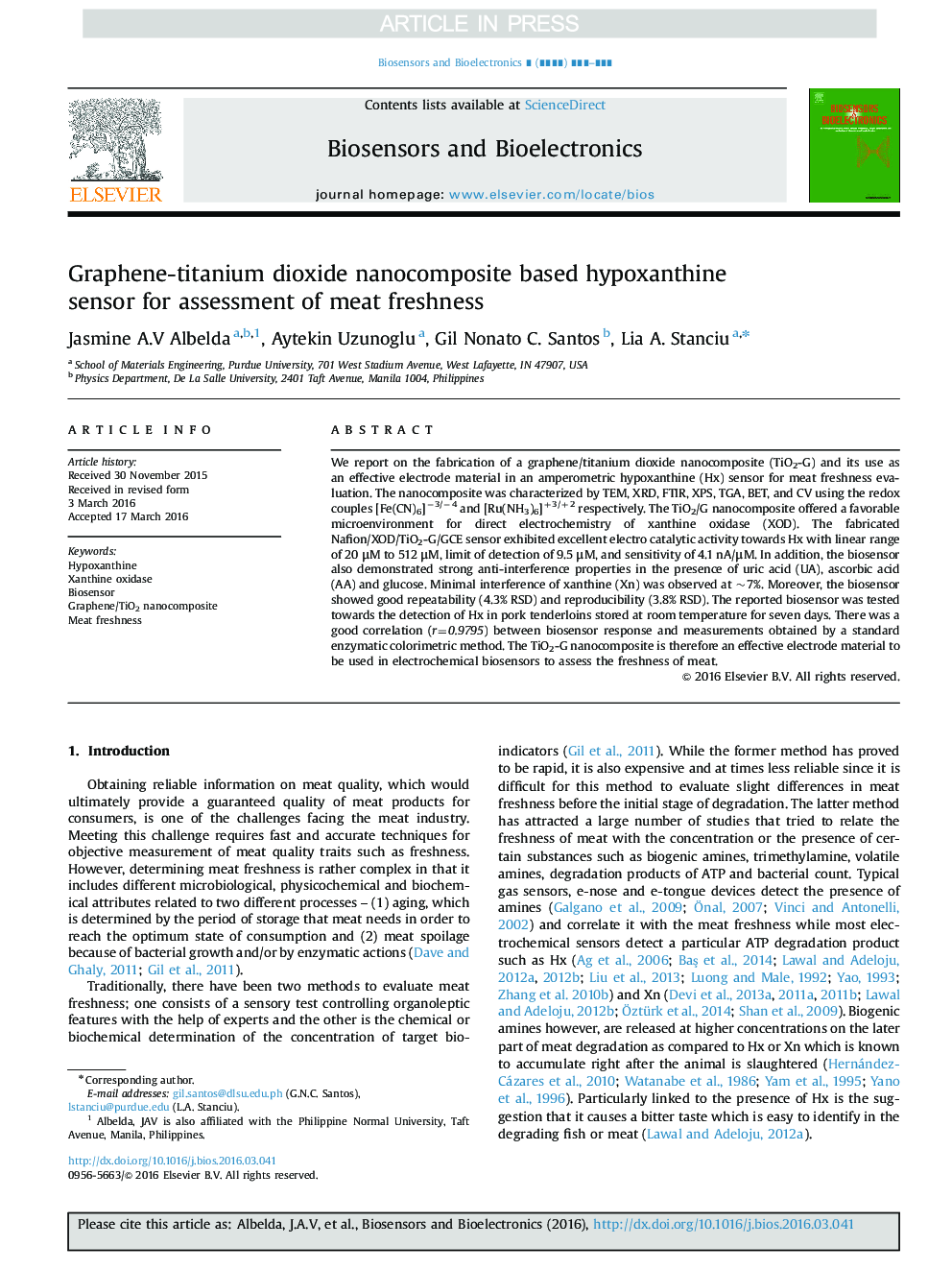| Article ID | Journal | Published Year | Pages | File Type |
|---|---|---|---|---|
| 5031716 | Biosensors and Bioelectronics | 2017 | 7 Pages |
Abstract
We report on the fabrication of a graphene/titanium dioxide nanocomposite (TiO2-G) and its use as an effective electrode material in an amperometric hypoxanthine (Hx) sensor for meat freshness evaluation. The nanocomposite was characterized by TEM, XRD, FTIR, XPS, TGA, BET, and CV using the redox couples [Fe(CN)6]â3/â4 and [Ru(NH3)6]+3/+2 respectively. The TiO2/G nanocomposite offered a favorable microenvironment for direct electrochemistry of xanthine oxidase (XOD). The fabricated Nafion/XOD/TiO2-G/GCE sensor exhibited excellent electro catalytic activity towards Hx with linear range of 20 μM to 512 μM, limit of detection of 9.5 μM, and sensitivity of 4.1 nA/μM. In addition, the biosensor also demonstrated strong anti-interference properties in the presence of uric acid (UA), ascorbic acid (AA) and glucose. Minimal interference of xanthine (Xn) was observed at ~7%. Moreover, the biosensor showed good repeatability (4.3% RSD) and reproducibility (3.8% RSD). The reported biosensor was tested towards the detection of Hx in pork tenderloins stored at room temperature for seven days. There was a good correlation (r=0.9795) between biosensor response and measurements obtained by a standard enzymatic colorimetric method. The TiO2-G nanocomposite is therefore an effective electrode material to be used in electrochemical biosensors to assess the freshness of meat.
Related Topics
Physical Sciences and Engineering
Chemistry
Analytical Chemistry
Authors
Jasmine A.V Albelda, Aytekin Uzunoglu, Gil Nonato C. Santos, Lia A. Stanciu,
